Email Marketing for Bloggers: From Readers to Revenue
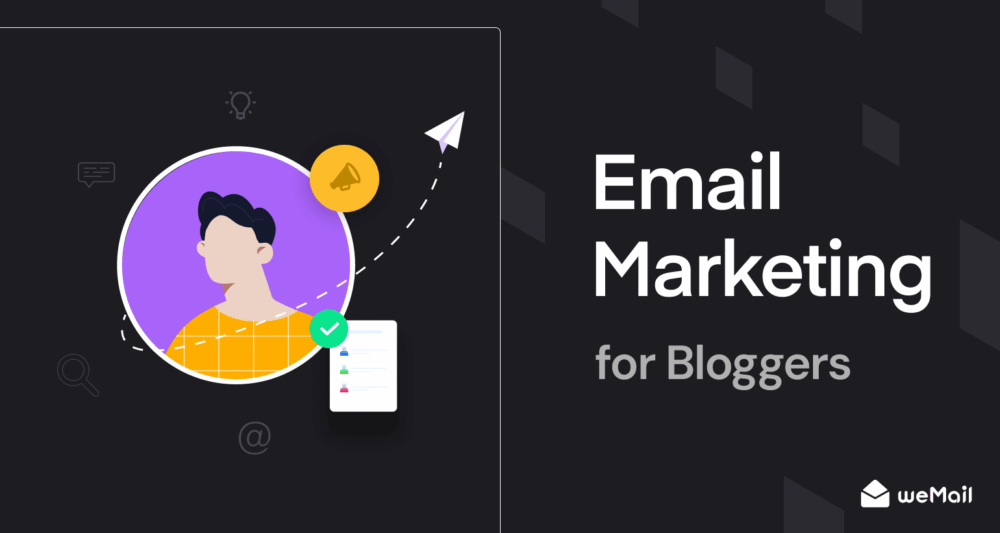
You pour your heart into your blog – crafting compelling content, optimizing for SEO, and keeping every plugin up to date. You do everything right. But the traffic? It barely moves. Finally, your traffic starts growing – until a sudden algorithm change resets all your progress.
Sound familiar? You’re not alone. Relying solely on search and social for growth leads to frustrating setbacks. It’s time for a better way: email marketing. Your email list is a direct line to your audience, bypassing algorithms to convert visitors into loyal readers and paying customers.
With an average $36 return for every $1 spent, email offers unmatched ROI. This guide will show you how to build and leverage an engaged email list for sustainable blog growth.
Why Bloggers Can’t Ignore Email Marketing

You’ve probably heard it before: “Build an email list.” But if you’re like most bloggers, it’s not at the top of your to-do list. You’re busy chasing traffic, optimizing SEO, or tweaking your latest post for social media channels.
Let’s keep it real, your blog doesn’t own its audience.
Facebook? It shows your post to maybe 2% of your followers.
Instagram? One post and it’s buried.
Search traffic? Google plays favorites. And it changes its mind every other week.
But your email list? That’s yours. No gatekeepers. No annoying algorithms.
When someone joins your list, they’re saying, “Hey, I want to hear from you again.” That’s gold.
That’s why email marketing isn’t just another tactic; it’s the foundation of a stable, scalable blogging business.
Take a blogger who writes about tiny homes. She built a simple 5-email welcome series sharing her best tips and photos. By email #3, she pitched her downloadable floor plan for $9.99. Hundreds bought. No ads. No complicated funnels. Just one list and one product.
You don’t need a giant list. You need a trusted one. And that’s how you turn your blog into a consistent revenue stream, not just a traffic show.
Is Your Blog Post Worth an Email Sign-Up?

So, how do you know if your blog is ready for email marketing? Here’s a quick gut check:
- Do you have content that people come back for?
- Do readers comment, share, or spend more than a minute on your site?
- Can you offer something helpful in exchange for an email?
Start by identifying what makes people stick around. What posts bring the most traffic or engagement? That’s your hint. Build your first email around that topic, and you’re off to the races. Here are three key reasons that make a blog post “email-worthy”?
a. Value That Hits Right Now
People sign up because you’ve given them a reason to want more. That means offering something useful, actionable, or inspiring in real time. Whether it’s a checklist, a free guide, a printable, or insider tips they can’t easily find elsewhere, your content needs to say, “I’m giving you something valuable today… and there’s more where that came from.”
Learn More: How to Create Lead Magnets for Email Campaigns
b. Clear Reasons to Stay Connected
Your reader might love your post, but unless they see a reason to hear from you again, they’ll leave and never come back. Make sure every post has a clear invitation:
“Join my list and get weekly tips on [specific topic]”
“Download this free resource – and I’ll send you updates and tools to help you go further.”
It’s not about tricking people into subscribing. It’s about being crystal clear on what they’ll gain by staying in touch.
c. Personality + Trust
People subscribe to people, not just blogs. If your writing feels authentic, helpful, and relatable, readers will feel like they’re building a relationship with you. Be generous. Be human. Show up consistently. That’s how you build trust, and that’s what turns a one-time reader into a long-term subscriber.
How to Grow Your Email List (Without Being Annoying)
How can you grow your email list without coming across as pushy or annoying? It’s all about providing value and being strategic.
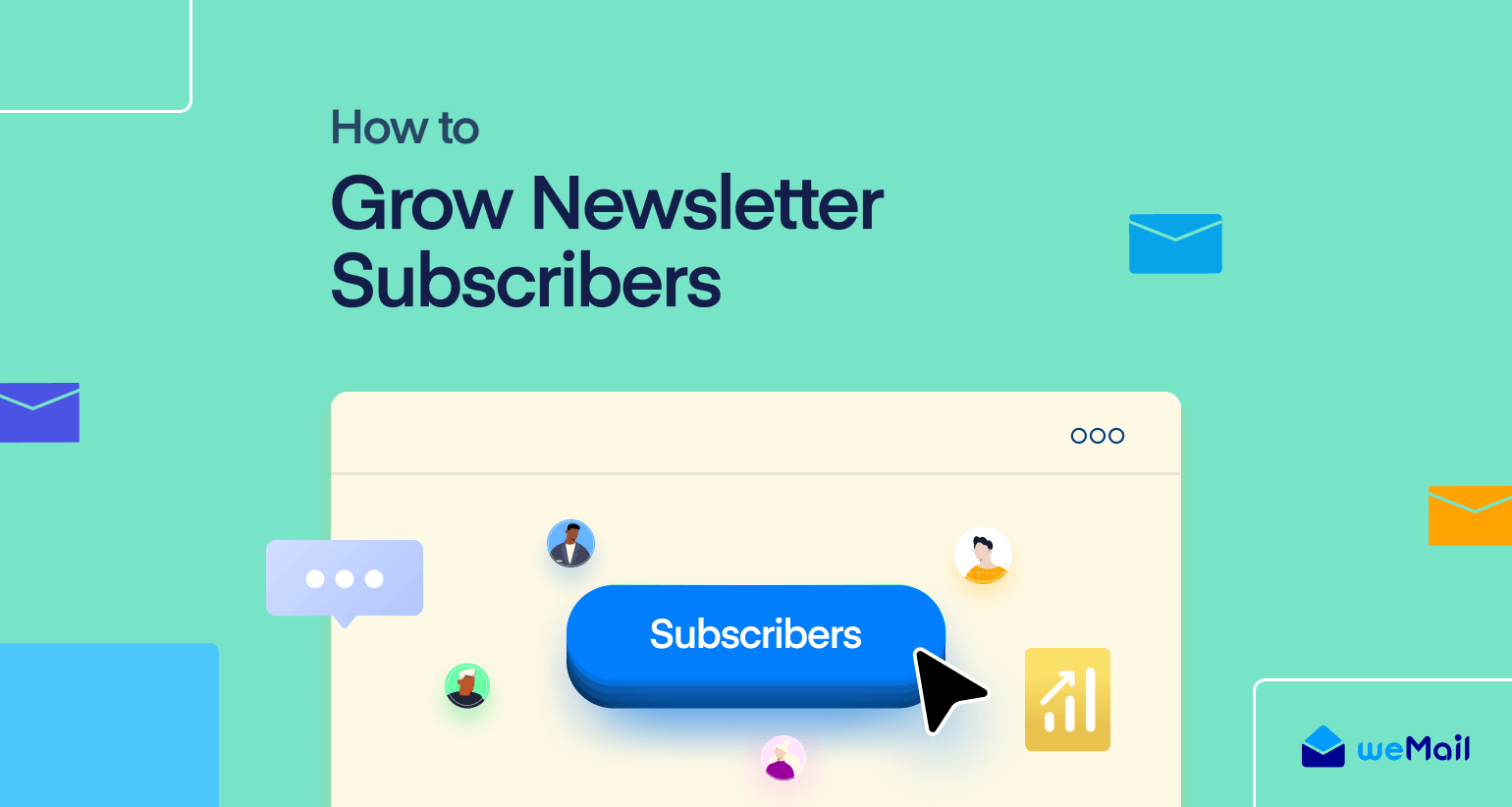
Nobody wakes up thinking, “I hope I get more email today.” So if you want someone to join your list, you’ve got to earn it. Not with pop-ups screaming “Subscribe Now!” But with a reason they actually care about. Here’s how to grow an email list as part of email marketing for bloggers:
1. Offer a Lead Magnet That Solves a Tiny Problem
Give them something that saves time, cuts effort, or fills a gap. Add an email subscription form to your site wisely and offer valuable lead magnets through it. Examples:
| Lead Magnet | Description | Examples for Bloggers |
| Checklists or Cheat Sheets | A concise, actionable guide related to a specific blog post or topic. | “The Ultimate SEO Checklist for New Bloggers” |
| Mini-eBooks or Guides | A more in-depth resource on a niche topic your audience cares about. | “Mastering Pinterest for Blog Traffic: A Comprehensive Guide” |
| Templates | Ready-to-use templates that save your audience time. | “Budget Planner Spreadsheet for Freelance Writers” |
| Resource Libraries | A curated collection of tools, links, and downloads exclusive to subscribers. | “A Curated List of Writing Prompts for Fiction Writers” |
| Mini-Courses (Email-based) | A series of emails delivering lessons on a specific skill. | “A 5-Day Email Course: Launch Your First Self-Hosted Blog” |
| Exclusive Content | Behind-the-scenes access, subscriber-only content, or early access. | “Behind the Scenes: How I Wrote My Viral Blog Post” |
| Webinar Replays | A recording of a valuable webinar you’ve hosted. | “Exclusive Access: Live Q&A on Affiliate Marketing for Bloggers” |
Make it specific. Make it fast to consume. Skip the 100-page ebooks no one finishes.
2. Put Signup Forms Where They Matter
No need to blast pop-ups everywhere. Just be smart about placement:
- In-Content Forms: Embed a sign-up form naturally within your blog posts, perhaps after a valuable section or at the end.
- Blog Sidebar/Header/Footer: Standard placements that are always visible, but might be less effective than more targeted options.
- Dedicated Landing Page: Create a standalone page solely for promoting your lead magnet and capturing emails. Link to this page from your social media, other blog posts, and even your email signature.
- “Hello Bar” or Sticky Bar: A subtle bar across the top or bottom of your website that stays visible as the user scrolls.
- About Page: People actually read it. So, people who’re interested in your blog are likely to visit this page and sign up from here.
Bonus tip: Add a two-step opt-in. It feels less pushy and boosts conversions.
3. Use Exit-Intent Only When It’s Worth It
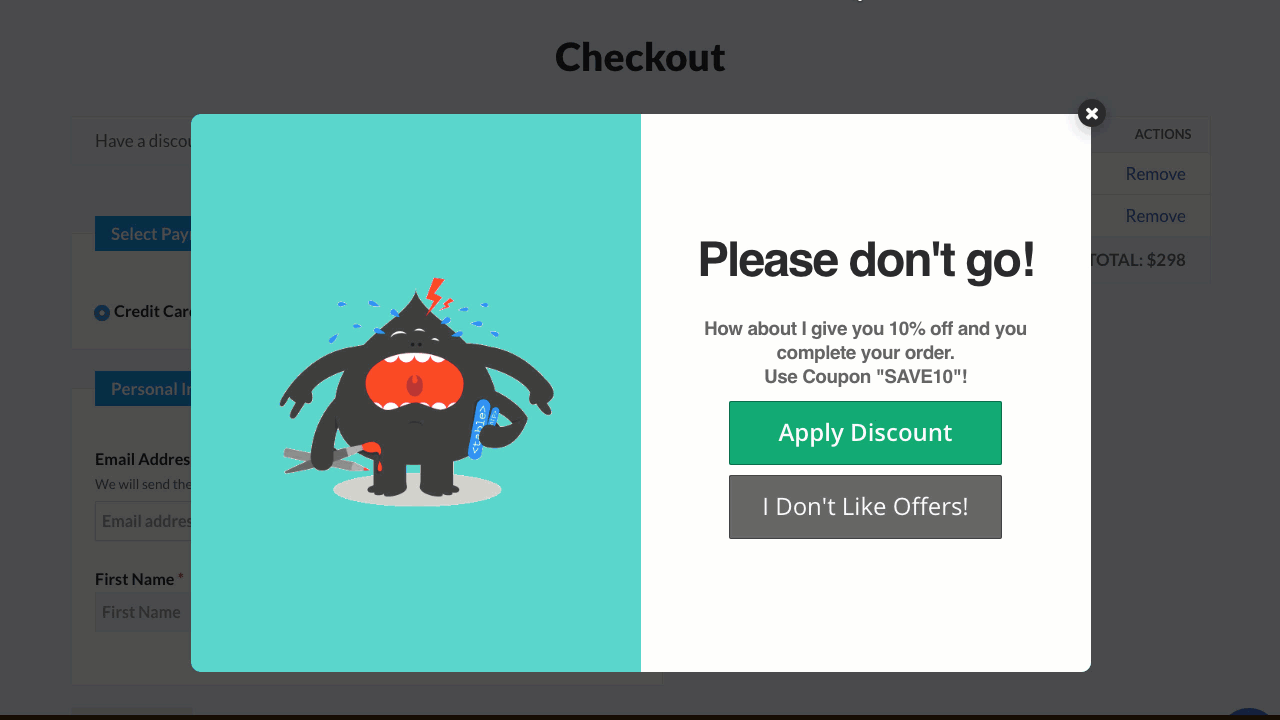
When designed well, exit-intent popups can be highly effective without being overly intrusive. Make sure they’re easy to close. If you’re going to interrupt someone as they leave, give them a solid reason to stay.
Try:
“Leaving already? Grab our free checklist for next time!”
But never:
“WAIT! Subscribe now!” (That just screams desperation.)
Remember: your list should be full of people who want to hear from you. Not folks who signed up by accident or out of guilt.
4. Leverage Social Proof
People are more likely to join something if they see others already benefiting from it. Harness the following things:
- Testimonials: Include a few glowing testimonials from existing subscribers on your sign-up forms or landing pages.
- Subscriber Count: If you have a decent number of subscribers, mention it (e.g., “Join 10,000+ fellow bloggers!”).
- Share Success Stories: Occasionally, share how your email content has helped a subscriber.
5. Promote Your List Beyond Your Blog (The “Everywhere Else”)
Don’t limit your list building to your blog. Leverage your existing audience on other platforms.
Social Media: Share snippets or previews of your email content. Promote your lead magnet with eye-catching visuals or short videos. Use your “Link in Bio” to direct followers to your landing page. Run contests or giveaways where email signup is an entry requirement.

Guest Blogging: When writing for other websites, include a compelling call to action in your author bio to subscribe to your email list.
Podcast/Video Descriptions: If you have other content forms, mention your email list and lead magnet in the descriptions.
Email Signature: Include a subtle link to your sign-up page in your personal and professional email signatures.
Remember, quality subscribers who are genuinely interested in your content are far more valuable than a large list of disengaged contacts. Learn more about how to grow your email list.
Email Types That Actually Work for Bloggers
Now that your list is growing, don’t leave your readers hanging. Keep them engaged with emails they’ll actually look forward to opening. Let’s break down the email types that work best for bloggers like you.
The Weekly Roundup:
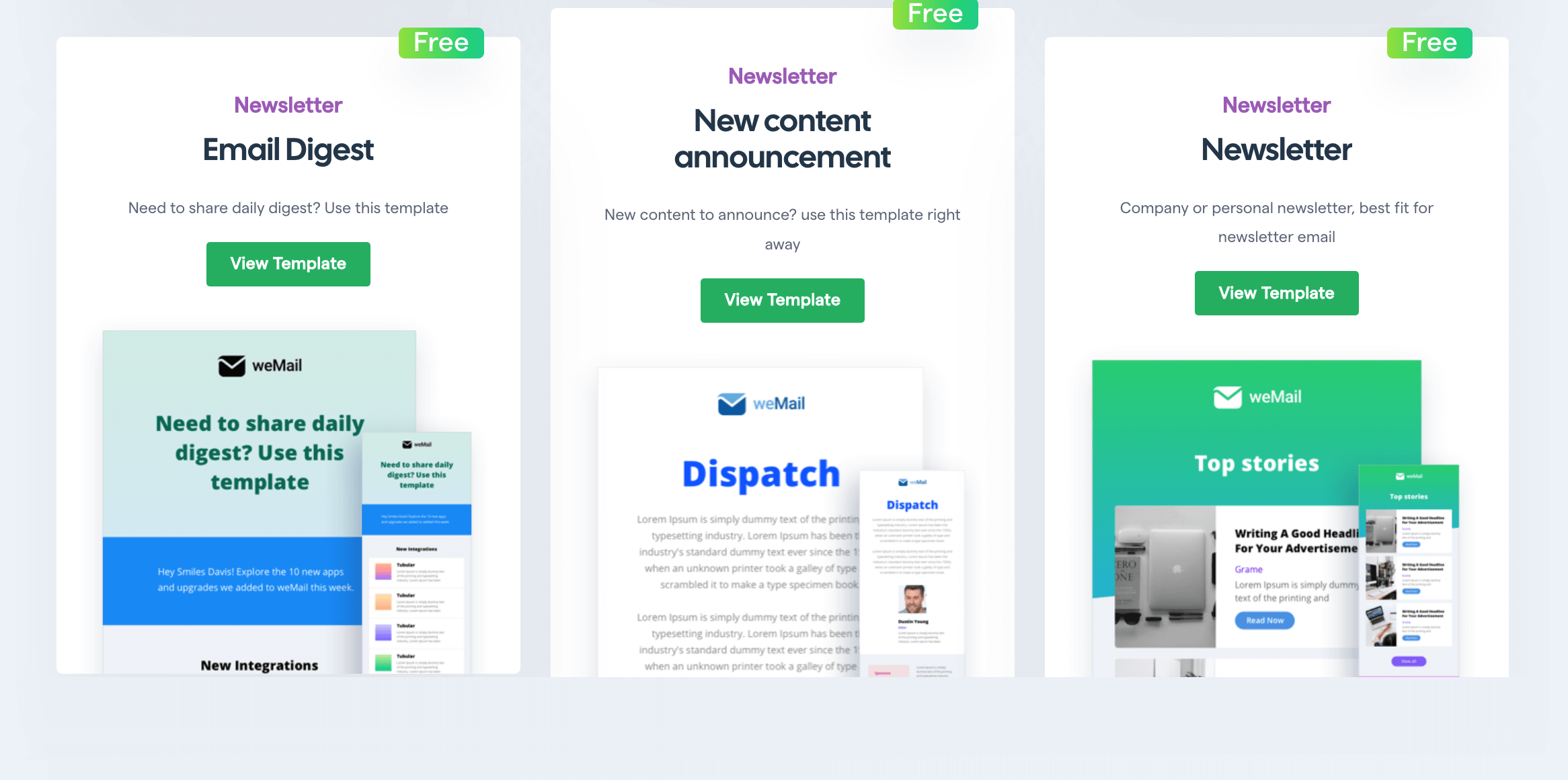
This one’s simple: highlight your latest posts or best-performing content. Add a short intro, drop 2–3 links, and maybe toss in a quick tip or fun fact. It keeps your blog top-of-mind without screaming BUY NOW.
The Personal Story + Lesson:
This isn’t just storytelling for the sake of it. It’s about connection. Share a behind-the-scenes moment, a fail, a win, or even something awkward. Then tie it to a takeaway your readers can use.
Example: “Last week, I accidentally deleted my blog’s entire homepage. Here’s what I learned about backups – and how to make sure it doesn’t happen to you.”
The Quick Tip:
This is the “value bomb” email. Just one helpful idea, tool, or hack.
Short. Sweet. Useful.
Example for WordPress users: “Speed tip: Swap out heavy themes for block-based ones like GeneratePress or Kadence. Your site (and Google) will thank you.”
The Soft Sell:
Let’s say you’re launching a course, promoting an affiliate tool, or offering services. Instead of hard-selling, share a story or result. Frame the offer around a real benefit.
Example: “Last month, I used [tool] to clean 2,300 spam comments in under 2 minutes. It’s my new favorite plugin – and here’s why.”
The Surprise Gift:
Every so often, send something unexpected: a mini-ebook, a private video, a printable, a discount code, no strings attached. Just because it shows you care. That’s rare in most inboxes.
Top 5 Email Marketing Tools for Bloggers
When you’re working hard with content, comments, and caffeine, the last thing you want is a complex and non-functional email tool. The following five tools make email marketing feel less like just another regular task.
1. weMail
If you’re using WordPress, weMail is the no-brainer. It blends right into your dashboard, so you don’t need to switch between tabs to send a campaign. You can collect emails from comments, registrations, and WooCommerce checkouts. With automation, detailed analytics, and embeddable forms, it’s built for bloggers who want results without wrestling with tech.
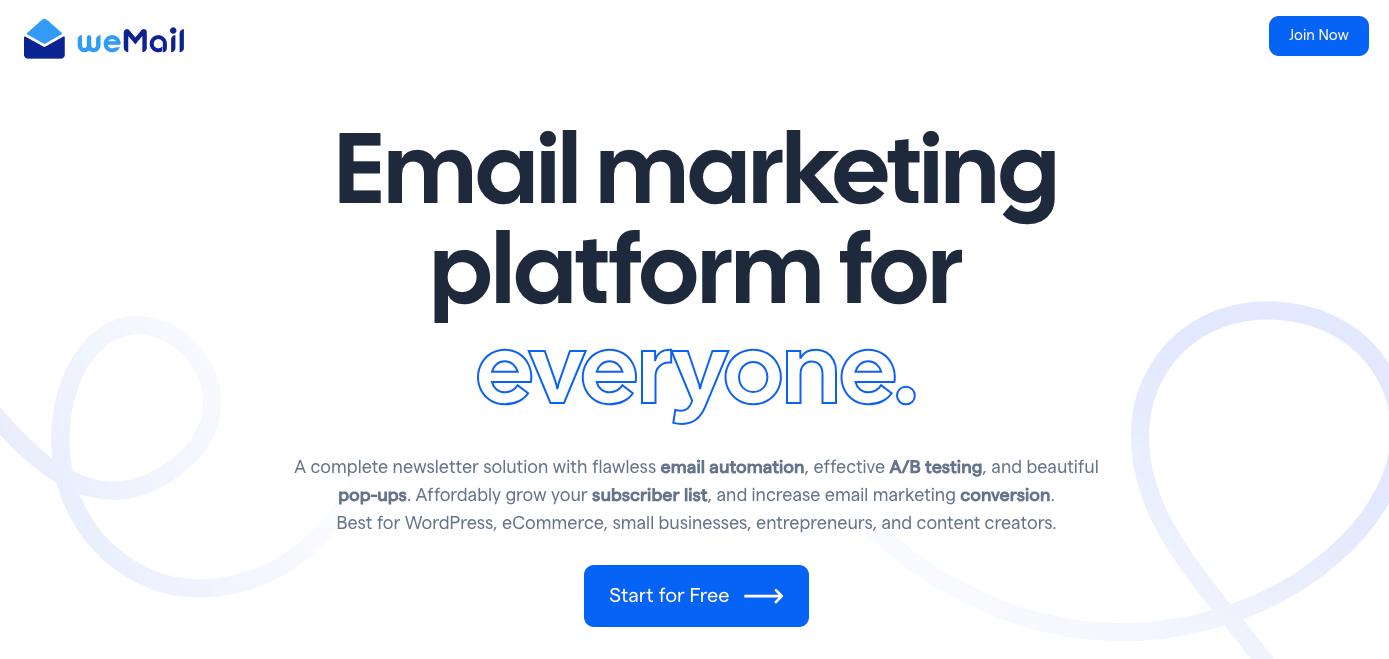
It’s the perfect choice for bloggers and small businesses. You can manage up to 3000 subscribers for free. Even the weMail pro version is affordable compared to other email marketing tools.
2. MailerLite
MaileLite offers a slick drag-and-drop editor and a generous free plan. Up to 1,000 subscribers and 12,000 emails a month for free. It’s perfect if you’re just starting but want room to grow.
3. Kit (formerly ConvertKit)
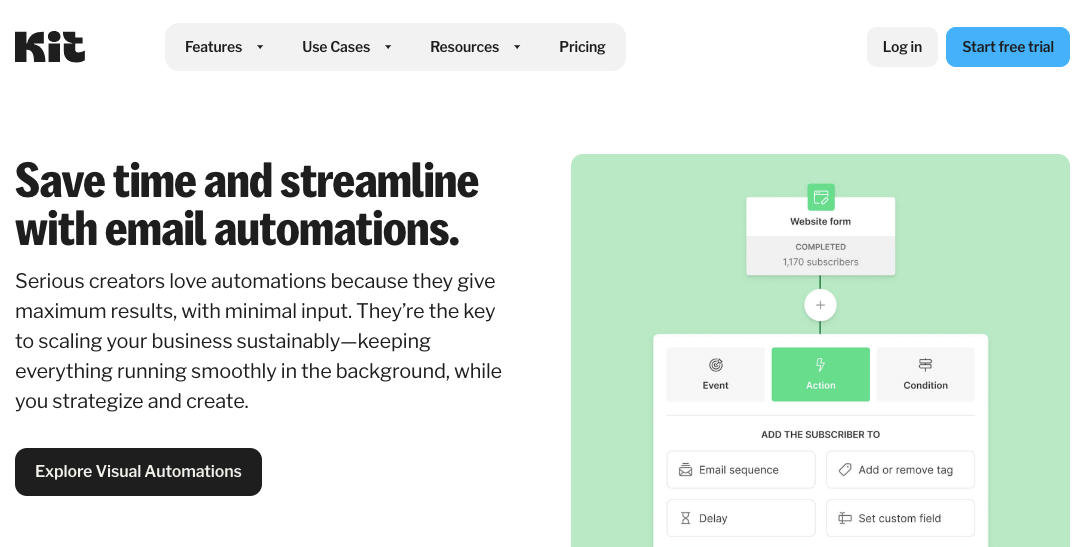
Kit, the artist formerly known as ConvertKit, was made for content creators. Think visual automations, subscriber tagging, and built-in monetization for selling digital goodies. It’s a solid pick for bloggers with big plans.
4. Beehiiv
Beehiiv is more than just an email tool; it’s your blog, newsletter, and monetization engine all rolled into one. Whether you’re running a paid newsletter or looking to join an ad network, Beehiiv helps you grow and earn without needing five separate tools.
5. Brevo
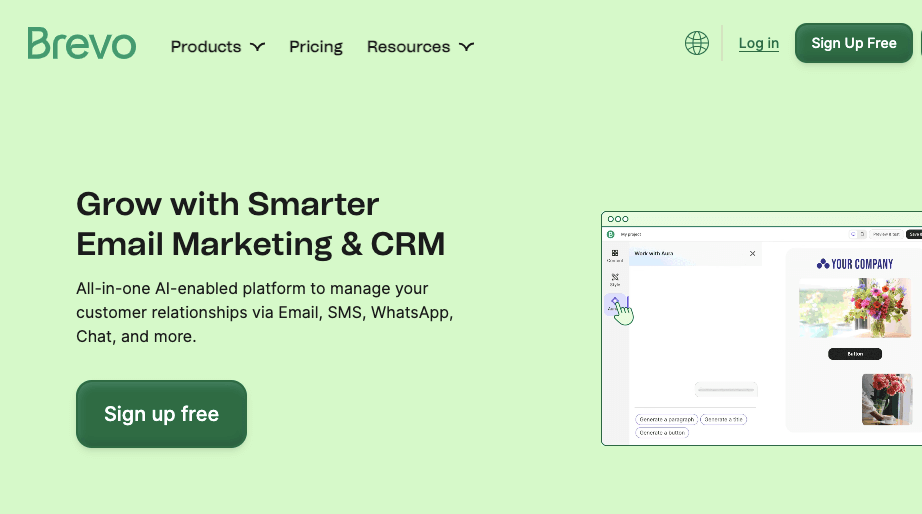
Brevo (formerly Sendinblue) is your go-to if you’re branching into e-commerce or multi-channel outreach. It handles emails, SMS, WhatsApp, and even CRM, all from one place. The free tier lets you send up to 300 emails a day, and pricing stays reasonable as you scale.
Top 5 Email Marketing Blogs to Follow As a Blogger
The email world moves fast, but these blogs help you keep up without falling into the guru trap. Real tips, real strategies, real wins.
1. EmailOctopus Blog
Check out the EmailOctopus blog if you’re after affordable, no-fuss strategies. Their advice is geared toward small businesses and indie bloggers who want results without breaking the bank.
2. Nathan Barry’s Email Mastery
Nathan Barry, the founder of ConvertKit, shares firsthand lessons on how to turn email subscribers into paying customers. He’s been in the trenches and built tools for creators just like you.
3. weMail Blog
The weMail blog is a goldmine for WordPress bloggers. Whether you’re figuring out how to build a list or setting up your first automation, it’s packed with how-tos and clear examples.
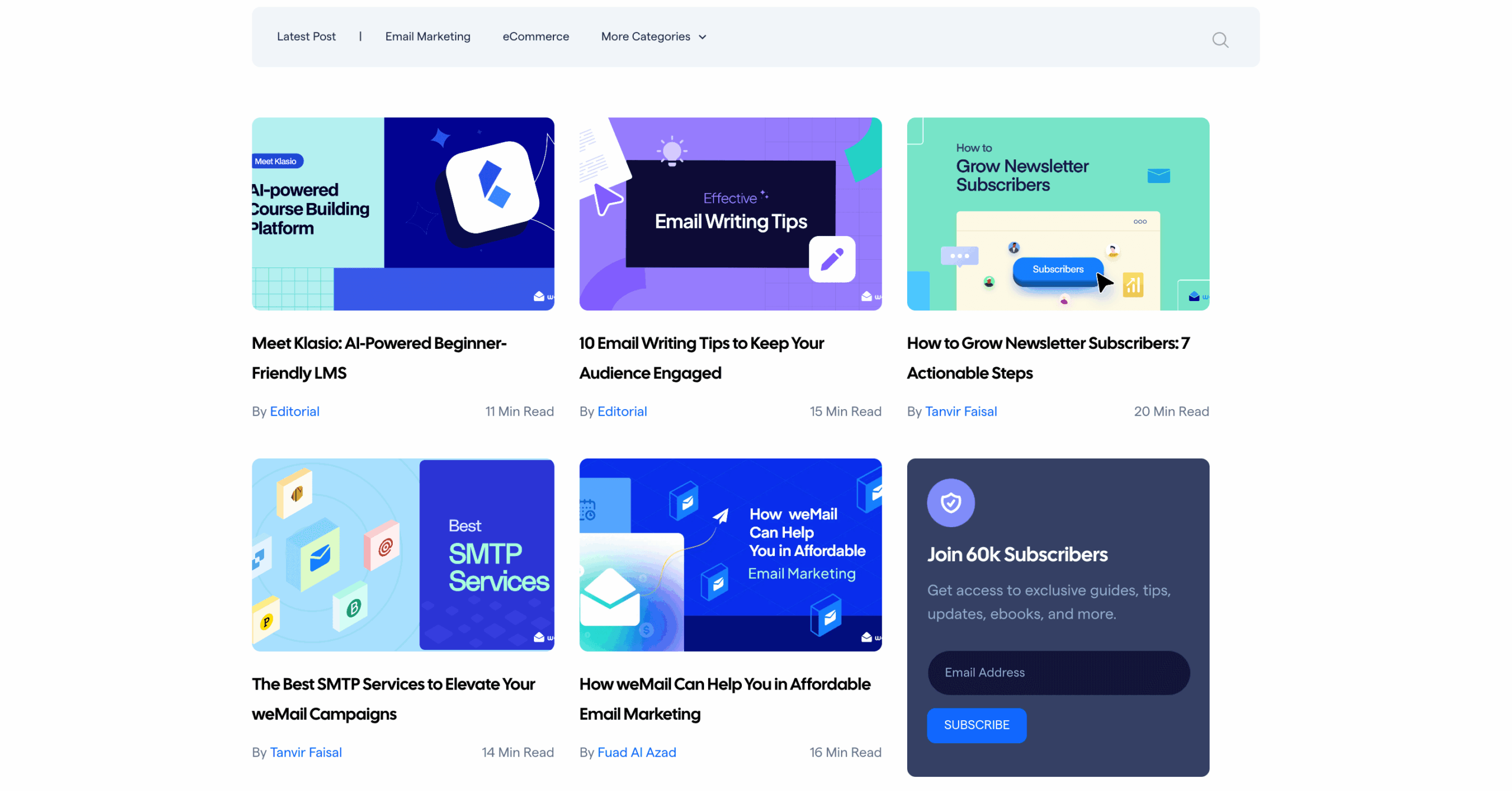
4. Litmus Blog
The Litmus blog goes deep into testing, deliverability, and design. If you’re ready to refine your campaigns and nerd out on what really works, this is the place to be.
5. Really Good Emails
Really Good Emails is the Pinterest of email marketing. Browse real examples from top brands, break down what works, and get inspired for your next campaign. It’s where good emails come to get better.
Turn Your Readers into Revenue – One Email at a Time
You’ve got the tools, the tactics, and the inspiration. Now it’s time to put your email list to work.
Start small. A signup form in the sidebar. A lead magnet your readers can’t resist. Then drip out content that feels personal, like you wrote it just for them. Because honestly, you did.
The real power of email marketing isn’t in flashy funnels or complex automations. It’s in showing up. Consistently. With value.
Whether you’re just starting or trying to revive a tired list, focus on building trust before chasing conversions. Once you’ve built that bond, the clicks and cash will follow.
And hey, if you’re running your blog on WordPress, tools like weMail make the whole process easier.
So, are you ready to turn your inbox into income?



